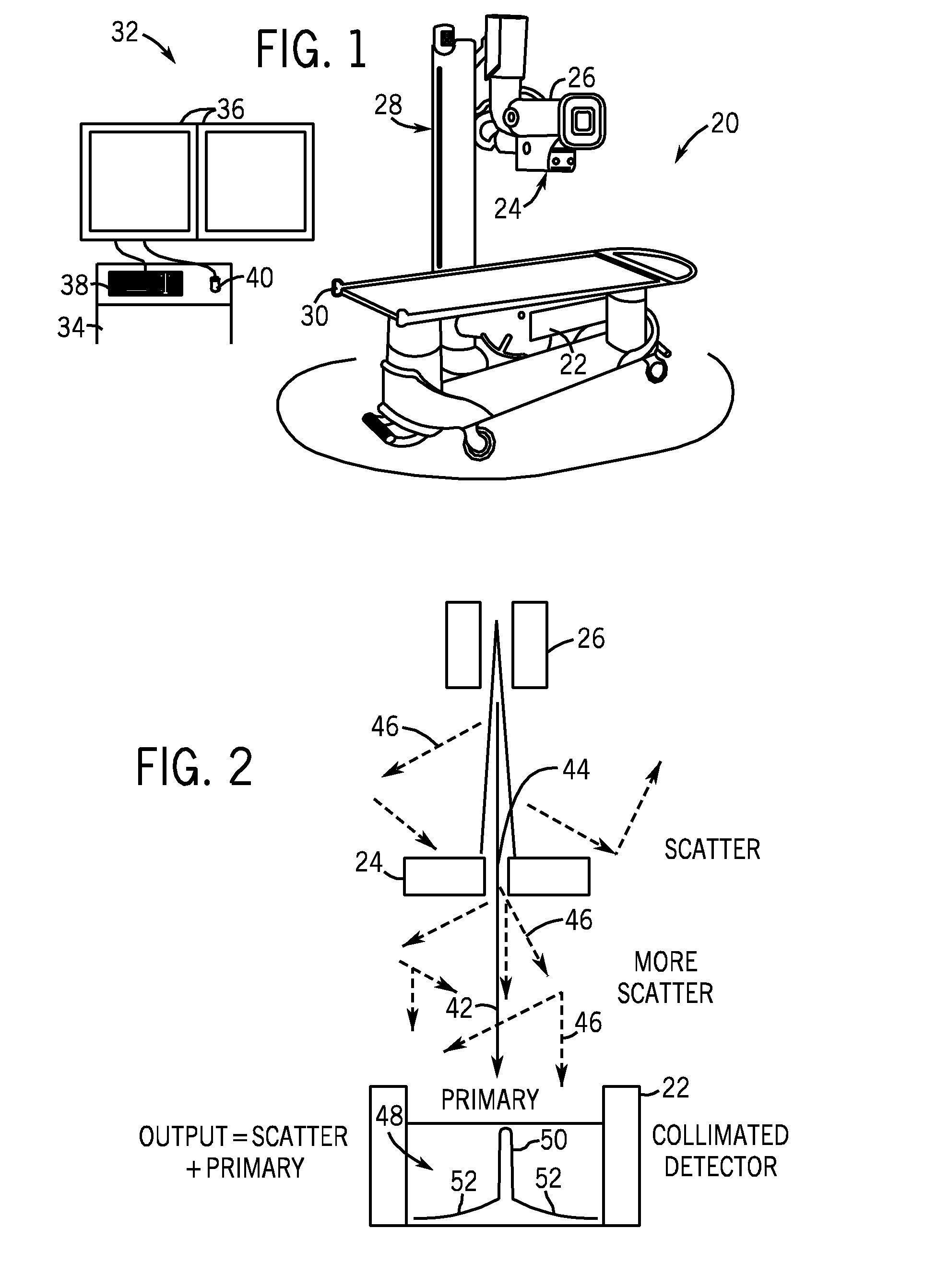Slit collimator scatter correction
a collimator and scatter correction technology, applied in the field of medical imaging, can solve the problems of slow healing and poor healing, physical abnormalities, and changes in postur
- Summary
- Abstract
- Description
- Claims
- Application Information
AI Technical Summary
Benefits of technology
Problems solved by technology
Method used
Image
Examples
Embodiment Construction
[0024]Referring now to FIG. 1, the present invention will be described as it might be applied in conjunction with an exemplary imaging system, in this case a dual-energy X-ray imaging system, as represented generally by reference numeral 20. In this embodiment, the dual-energy X-ray imaging system 20 is operable to perform dual-energy X-ray absorpiometry (DXA). In general, however, it should be borne in mind that the present techniques may be used with any suitable imaging modality. In particular, this technique is applicable for any imaging system using a large, flat-panel digital detector.
[0025]In the illustrated embodiment, the system 20 has a large, flat-panel digital X-ray detector 22, and a slit collimator 24 disposed over an X-ray source 26. The dual-energy X-ray imaging system 20 is capable of producing images of bone and soft tissue by taking images using X-rays of different energy. In particular, the system 20 is capable of producing an image of a region of interest using ...
PUM
 Login to View More
Login to View More Abstract
Description
Claims
Application Information
 Login to View More
Login to View More - R&D
- Intellectual Property
- Life Sciences
- Materials
- Tech Scout
- Unparalleled Data Quality
- Higher Quality Content
- 60% Fewer Hallucinations
Browse by: Latest US Patents, China's latest patents, Technical Efficacy Thesaurus, Application Domain, Technology Topic, Popular Technical Reports.
© 2025 PatSnap. All rights reserved.Legal|Privacy policy|Modern Slavery Act Transparency Statement|Sitemap|About US| Contact US: help@patsnap.com



